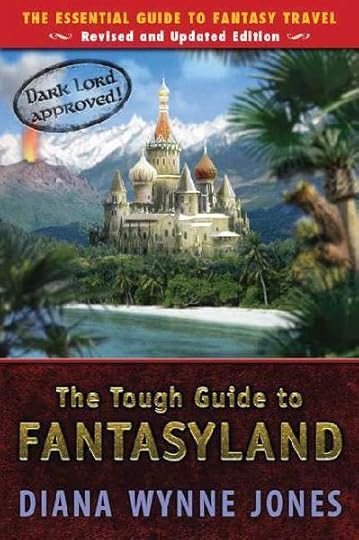Worldbuilding101: Technology and Time Periods
Speaking of 80s power ballads (and crappy segues), it’s time to look at technology and time periods in fantasy societies. This is probably one of the more obvious marks of your society, and it can completely change the feel of your work, so it’s something you should think long and hard about… because it’s going to influence everything from your transportation options to the kind of lighting in your hero’s home.
Broadly speaking, there are three main technological eras that fantasy novels tend to be set in: Pseudo Ancient Greece, Ye Olde Medieval; Industrial-Revolution-with-the-numbers-filed-off.
1. Pseudo Ancient Greece. This tends to crop up a lot when dealing with the mythical past. A LOT of fantasy lands seem to be stuck in an age of decay, where things haven’t changed for thousands of years, and ruins of once-grand civilisations litter the countryside. These ancient civilisations tend to share a lot of similarities with Ancient Greece and Rome – impressive engineering skills, enlightened society, all-encompassing culture. See Tolkien’s Numenor as the most famous example. I think, as a society, we’re fascinated by the mysterious past. Atlantis, Avalon, El Dorado: these cities have set our imagination on fire, and I’m not surprised that this echoes in our writing.
When the pseudo ancient culture is not in the fantasy land’s distant past, but rather it’s future, this tends to intersect with the sword-and-sorcery genre (Robert E. Howard’s Conan series being the most famous). Here, though, there is less emphasis on enlightenment and more on the bloody battle to survive. You’re more likely to have warring tribes, primitive technology, and strange and deadly magic. If you’re interested in writing this level of technology, I’d suggest reading about the Dark Ages in Europe, as this is the period it most corresponds with.
[And although it's not technically relevant to a technological discussion, check out Victoria Hooper's awesome breakdown of how ancient Greek mythologies influence modern fantasy]
2. Ye Olde Medieval. This is probably THE stereotypical time period that people most jump to when they think of fantasy. You’re looking at castles, travelling by horseback, grand feasts with boars roasting over fires. Think middle-ages Europe. Tolkien mostly borrowed from this time period (although his hobbits seem to live a comfortable 18th century life), and authors from George R.R. Martin to Christopher Paolini have put their own spin on it.
 Also, this… the leading cause of headdesks among writers new to the fantasy genre
Also, this… the leading cause of headdesks among writers new to the fantasy genreThis period of history has enormous potential for storytelling. What fascinates me about it is that it’s probably the last time when the level of technology was low enough for magic to still be a viable force in many people’s mind. It was a time of unlimited possibility… here be dragons, as the maps said. Thunder could be gods warring with each other, and earthquakes a great serpent writhing in the earth. This gives you great scope in the creation of your fantasy world… and an amazing chance to take this concept and brand it with your own particular twist. George R.R. Martin, for example, took the generic Ye Olde Medieval concept and made it his own with his emphasis on brutality, the lack of magic (though it does seep in more and more in the later books), the complex inter-family politics. Writing in this time period gives you free reign to do the same.
Read widely – histories, politics, geography. You’d be surprised how developed the medieval period actually is. Fireworks date back to 7th century China, Constantinople was a thriving metropolis of learning and trade in the 12th century, and Columbus started out on his famous voyage in 1492.
3. Industrial-Revolution-with-the-numbers-filed-off. This is the time period that I tend to write in. Its greatest influence is, obviously, the Industrial Revolution. You’re looking at a time of great industry, a mass exodus of workers from the country to the cities, reliable transportation such as carriages and especially trains (with steampunk works often including zeppelins), gas lighting, sometimes even telegraphs. It’s probably the hardest to write in as it relies on a lot more research, which can be a burden or a blessing depending on your feelings about poring over large (and sometimes incredibly dry) tomes.
I really feel that you need to have at least a cursory understanding of the 19th century if you’re going to borrow from it when it comes to the technological level of your fantasy world. I’d recommend Niall Ferguson’s Empire: The Rise and Demise of the British World Order and the Lessons for Global Power, and especially The Victorian House by Judith Flanders, which I found a delightful and surprisingly funny rundown of Victorian society by breaking it down room by room.
As you can probably see, looking at technology and time periods can mean a lot of research. But it’s research that’s going to lay the foundations for a truly unique fantasy book.
Next up is a quick overview of the common systems of governance. If you have a favourite time period you like to draw inspiration from, please let me know either in the comments below or by emailing k.a.barkerwrites [at] gmail [dot] com.



